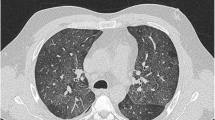Abstract
Objective: Follow-up study of exposure and acute exposure-effects after modification to steam humidification of a contaminated cold water system which had caused an outbreak of humidifier fever in a synthetic-fibre plant. Methods: Before and after modification of the system aerobiological measurements were performed. Concentrations of fungi and bacteria, in colony forming units (cfu) per m3, were measured by stationary air sampling with an Andersen sampler. Endotoxin levels (pg/m3) were determined by Limulus Amoebocyte Lysate (LAL) assay in pooled dust from personal air sampling. An indication of exposure levels of oil-mist was obtained by monitoring with a direct reading optical photometer. Changes as acute exposure-effects in spirometry and white blood cell count, during an afternoon shift were compared in exposed and non-exposed workers before and after modification. Results: Measured levels of fungi, total bacteria, Gram-negative bacteria and endotoxins both before and after modification were below levels which would be expected to be associated with the exposure-effects. However, after modification, we found that the statistically significant differences in levels of bacteria and endotoxins with a department without humidification no longer existed. Mean oil-mist concentrations were below 1 mg/m3, with short-time peak exposure during certain tasks of up to 5 mg/m3. Before modification, in exposed workers there was significantly more decline of spirometry, and more increase of white blood cell count during the first afternoon shift, compared with non-exposed workers. In exposed workers, the white blood cell count increase was positively associated with decline of spirometry. After modification, differences between exposed and non-exposed workers no longer existed. Conclusion: Follow-up investigation of acute exposure-effects demonstrated the effectiveness of remedial actions taken against a contaminated humidification system. Follow-up of exposure-effects in particular is recommended when there is doubt about the interpretation of exposure measurements.
Similar content being viewed by others
Author information
Authors and Affiliations
Additional information
Received: 27 January 1999 / Accepted: 22 January 2000
Rights and permissions
About this article
Cite this article
Pal, T., de Monchy, J., Groothoff, J. et al. Exposure and acute exposure-effects before and after modification of a contaminated humidification system in a synthetic-fibre plant. Int Arch Occup Environ Health 73, 369–375 (2000). https://doi.org/10.1007/s004200000131
Issue Date:
DOI: https://doi.org/10.1007/s004200000131




